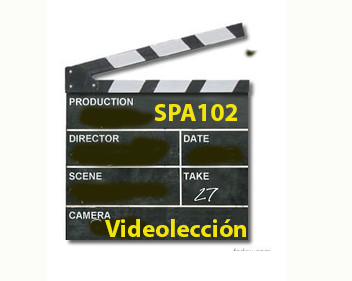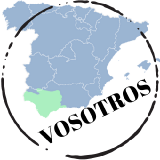1.6: El pretérito de los verbos regulares
- Page ID
- 158551
Examples of the preterite tense
Read the information below about La Sagrada Familia, one of Spain's most famous buildings. Note the bolded verbs: they are in the preterite tense.
|
La Sagrada Familia es el edificio más emblemático de Barcelona. La construcción de la catedral del arquitecto Antonio Gaudí comenzó hace más de 140 años, pero Gaudí solo trabajó durante 40 años en su obra maestra. Después, otros se encargaron de realizar su visión. Gaudí y sus colaboradores construyeron la fachada del nacimiento para dejarlo como muestra para el futuro. La Sagrada Familia va a tener el campanario más alto del mundo, sin embargo, Gaudí no dejó planos de ejecución a sus sucesores pues él empleaba modelos en yeso, pero estos fueron destruidos en su mayoría durante la guerra civil española en los años treinta. Seguir con las obras de construcción de La Sagrada Familia siempre creó controversia. En los años 50, un grupo de arquitectos pidieron dejarla incompleta. Representantes del ámbito artístico y arquitectonico español apoyaron esta postura en el año 2008 también. Actualmente las protestas cesaron con excepción de vecinos del lugar, que temen grandes aglomeraciones de personas. El objetivo es terminar la construcción para celebrar el centenario de la muerte de Gaudí, quien murió en 1926. |
“Sagrada Familia 8-12-21 (1)modified.jpg” by Canaan is licensed under CC BY-SA 4.0. |
| This text adapted from 2.9: España by M. Barrio De Mendoza, K Gutiérrez, H.Ho, C. Lin, & A Stere Lugo through ASCCC Open Educational Resources Initiative, licensed under CC BY-NC 4.0 / Shortened and modified to focus on the preterite tense; image added. | |
Preterite tense of regular verbs
To talk about events in the past, Spanish uses two simple tenses: the preterite and the imperfect. In this chapter we will explore the preterite tense.
Uses
- To talk about actions or states completed in the past
- To express the beginning or the end of a past action
- To narrate a series of past completed actions
- To express an action that had a specific duration
Conjugation of regular verbs
In the following conjugations, the preterite endings are in bold.
| Subject Pronoun: | -AR ending verb: Hablar | -ER, -IR ending verbs: Comer, Escribir |
|---|---|---|
| Yo | hablé | comí, escribí |
| Tú | hablaste | comiste, escribiste |
| Ud., él, ella | habló | comió, escribió |
| Nosotros, nosotras | hablamos | comimos, escribimos |
| Uds., ellos, ellas | hablaron | comieron, escribieron |
Conjugation notes for "vos" and "vosotros" can be found by clicking the respective icons:
Keep in mind:
- A written accent is needed on the last syllable of the conjugation of "yo" and "Ud., él, ella" form. These are important to distinguish between different verb tenses, such as the present and preterit tenses (Hablo = I speak; Habló = He/She/You spoke).
- The preterite endings for regular -ER and -IR verbs are identical.
- The "nosotros" forms of regular -AR and -IR verbs in the preterite are identical to the present tense form. Context will help you determine which tense is being used. There should be no confusion for -ER verbs since those endings are different:
| -AR | -IR | BUT... | -ER | |
| Present | En invierno compramos suéteres.(In the winter we buy sweaters.) | Escribimos poemas en clase. (We write poems in clase.) | Siempre comemos en casa. (We always eat at home.) | |
| Preterite | Anoche compramos unas sandalias. (Last night we bought some sandals.) | Ya escribimos dos veces al presidente. (We already wrote to the president twice.) | Hace dos días, comimos en nuestro restaurante favorito. (Two days ago, we ate at our favorite restaurant.) |
This page excerpted and adapted from 5.6: El pretérito de los verbos regulares by M. Barrio De Mendoza, K Gutiérrez, H.Ho, C. Lin, & A Stere Lugo through ASCCC Open Educational Resources Initiative, licensed under CC BY-NC 4.0 / Slight rephrasing, reformatting and addition of examples and sample text, incorporation of explanation phrasing from 3.7: El pretérito by Erica Brown, Alejandra Escudero, María Cristina Montoya, & Elizabeth Small (OER SUNY), which is licensed under CC BY 4.0.
Videolección
By clicking on the icon below, you can hear a video lesson about the preterite.
 |
-AR verb conjugations: starting at 0:50 Overview of when to use it: starting at 4:30 -ER/-IR verb conjugations: starting at 6:24 |
¡A practicar!
This activity excerpted from 5.6.1: Práctica- El pretérito de los verbos regulares by M. Barrio De Mendoza, K Gutiérrez, H.Ho, C. Lin, & A Stere Lugo through ASCCC Open Educational Resources Initiative, licensed under CC BY-NC 4.0.
¿Qué hiciste hoy antes de irte a clase, y cuándo? Debes escribir una cronología de tu día hasta tu llegada a la clase.
Ejemplo: A las 6 me levanté. A las 6:30 desayuné. A las 7...


modified.jpg?revision=1)

